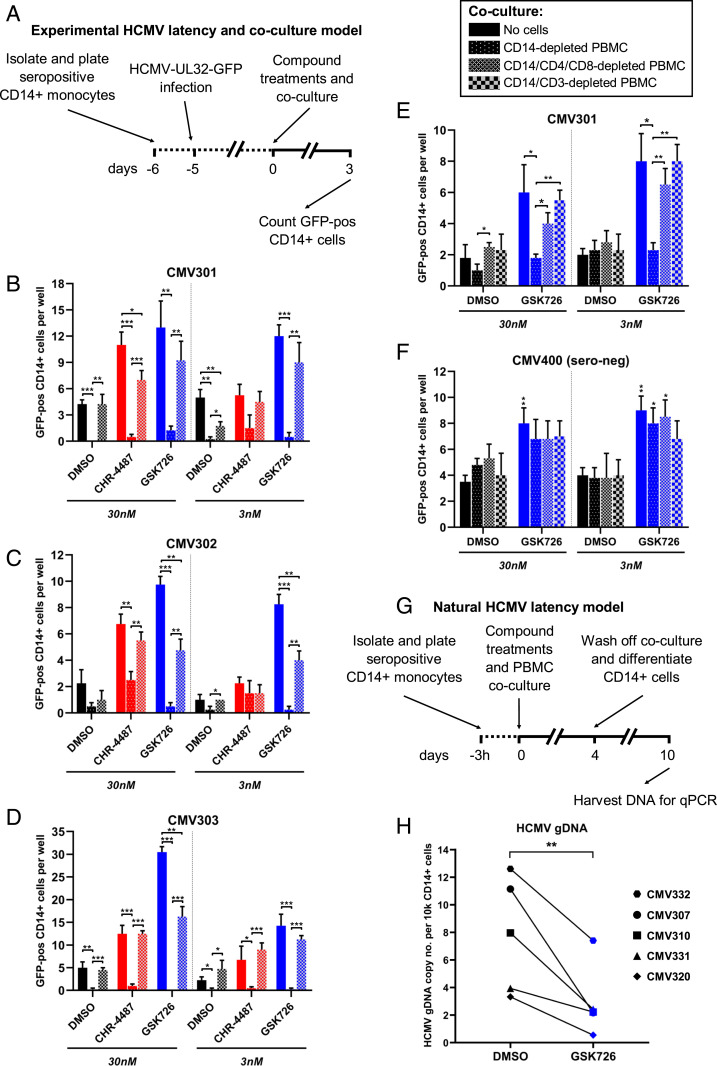Fig. 5.
BET inhibitors allow efficient killing of latent HCMV-infected cells and reduce peripheral blood virus carriage. (A–D) CD14+ monocytes isolated from seropositive peripheral blood were infected with HCMV TB40e UL32-GFP for 5 d before cocultures were established (no cells, full bars; CD14-depleted PBMCs, dotted bars; CD14/CD4/CD8-depleted PBMCs, hatched bars) and treated with either DMSO (black bars), HDACi (CHR-4487, red bars), or I-BET (GSK726, blue bars) (30 and 3 nM) for 72 h (A). The number of GFP-positive cells per well was then counted for seropositive donor (B) CMV301, (C) CMV302, and (D) CMV303 (mean + SEM, n = 3). (E and F) Experiments were repeated with additional coculture of CD14/CD3-depleted PBMCs (checkered bars), and GFP-positive cells were counted for (E) seropositive donor CMV301 and (F) seronegative donor CMV400 (mean + SEM, n = 4; *P < 0.05, **P < 0.01, ***P < 0.001). (G) Treatment regime of cells in H. CD14+ monocytes isolated from peripheral blood of five seropositive donors were plated for 3 h before cocultures were established using total remaining PBMCs and either DMSO (black symbol) or I-BET (GSK726, 30 nM; blue symbol). After 4 d, coculture was withdrawn and CD14+ monocytes were differentiated (GM-CSF/IL-1β 5-d, LPS 5-d) before cells were harvested, DNA isolated and (H) HCMV genome copy number determined by qPCR of glycoprotein B DNA relative to host GAPDH promoter (mean, n = 3). **P value = 0.0092 (Student’s t test).

